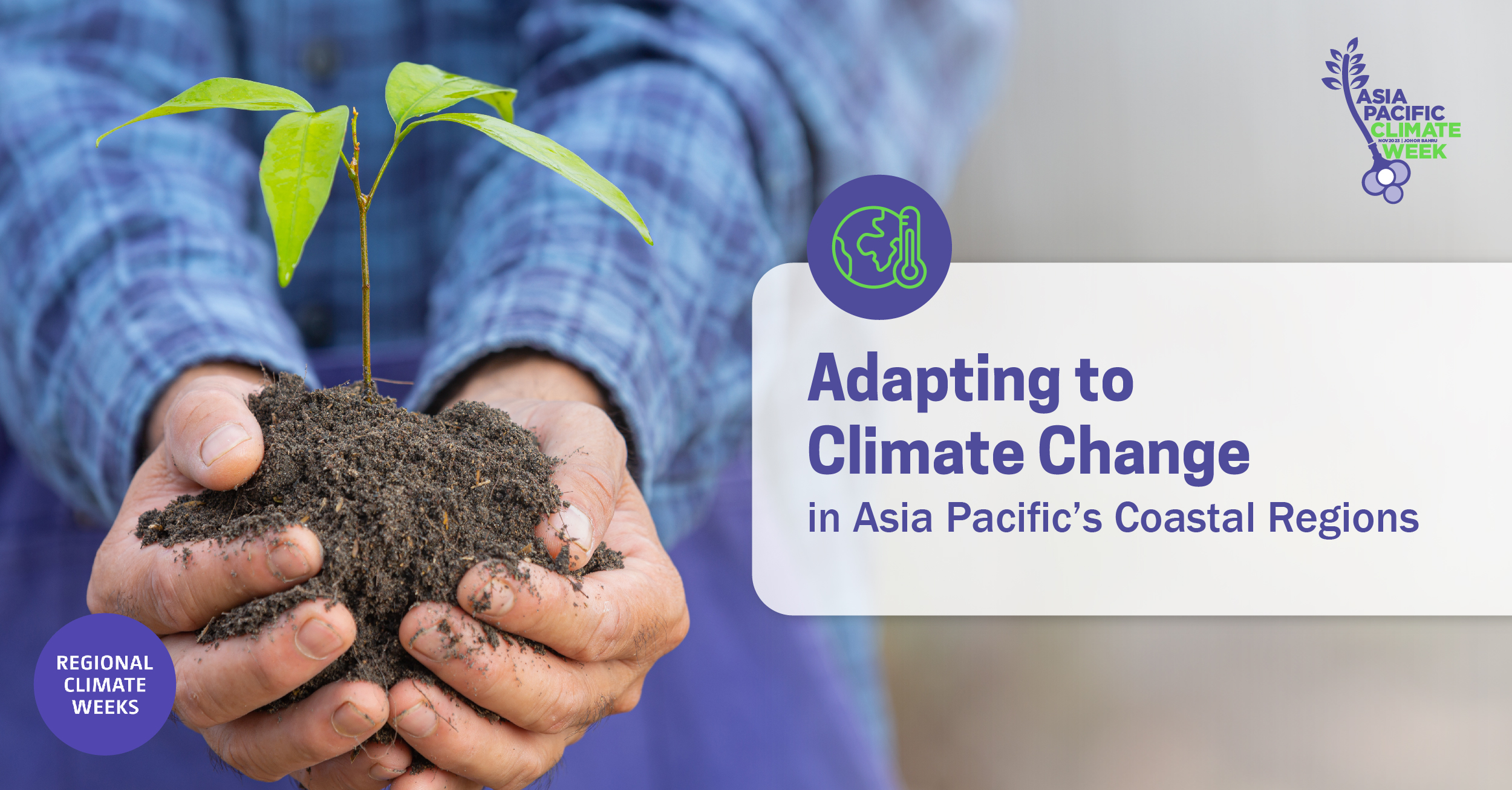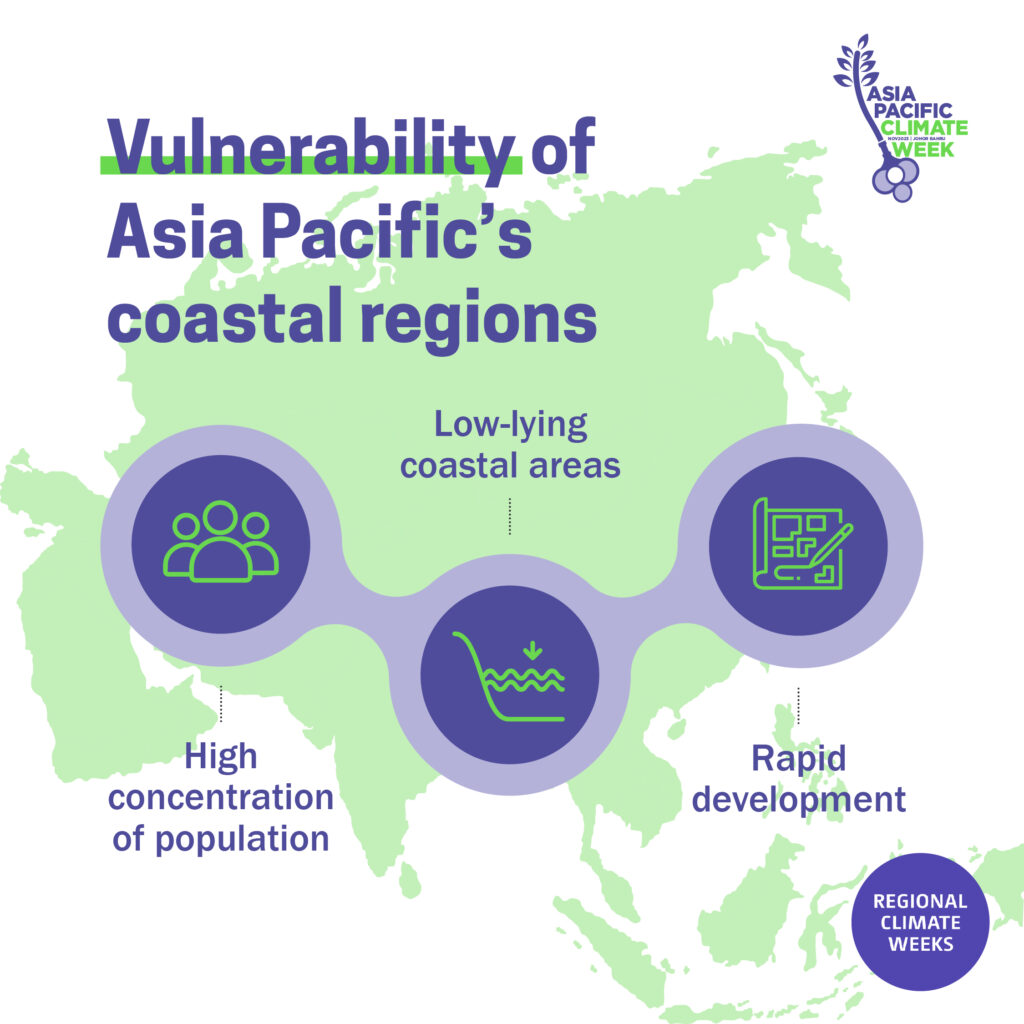
Coastal communities worldwide are suffering the impacts of climate change. Since the 1800s, sea levels have risen by approximately 23 centimetres, with projections indicating a further increase of 30 centimetres by 2050. Along with the increased intensity of typhoons and erosions, this trajectory will inundate low-lying coastal areas and displace millions of people.

The Asia Pacific region is particularly vulnerable to the impacts of climate change on coastal communities. Three primary reasons underscore this susceptibility. Firstly, a significant portion of the global population resides in Asia Pacific’s coastal megacities, with Tokyo, Shanghai, Jakarta, and Manila being prime examples. The concentration of inhabitants in these areas means that a large number of people are at risk from the impacts of climate change. Secondly, the region is characterised by its low-lying coastal areas, which makes it particularly vulnerable to sea level rise and inundation. Additionally, the rapid development of many of the region’s coastal zones not only strains natural resources and ecosystems, but also heightens their susceptibility to the effects of climate change.
To alleviate the impact on its coastlines, countries across Asia Pacific are undertaking numerous innovative solutions. Here are 4 successful initiatives in the region:
Mangrove Restoration and Conservation (Malaysia)
Malaysia’s mangroves are a vital part of the country’s ecological balance, acting as natural shields for communities along coastlines and riverbanks while mitigating risks from floods and tsunamis. Over the past decade, challenges like illegal logging, fires, pollution, and aquaculture have resulted in a 50% decline in mangrove cover.
In 2015, Ericsson introduced the Connected Mangroves project in Sabak Bernam. This initiative uses 5G technology to deploy sensors that monitor factors such as soil moisture, salinity, and temperature in the mangrove forests. The collected data is then transmitted to a cloud platform and subsequently analysed to detect potential issues such as pests or environmental changes.
Since the start of the project, this initiative has improved the survival rates of mangrove saplings from 40% to 85%. It has also helped to speed up the maturation process of these trees. Furthermore, mangrove forests are rich ecosystems that serve as a breeding ground for a myriad of species that contribute to the food security of millions. They also act as buffer zones against wave action, strengthen coastlines against storms and cyclones, and are known to be among the world’s most effective carbon sinks, absorbing carbon at a rate that is 4x higher than terrestrial forests.
Building Resilient Infrastructure (Vietnam)
With floods accounting for 75% of natural disasters in the region, Vietnam recognises the need for climate resilient infrastructure. This type of infrastructure adheres to elevated standards and incorporates materials that resist the detrimental effects of rising sea levels, coastal erosion, and extreme weather events.
In Vietnam, the United Nations Development Programme (UNDP) has constructed over 3,000 storm-and-flood resilient homes across five provinces in Central Vietnam. These structures are engineered to endure both floods and strong winds. Key features include reinforced concrete foundations and frames, elevated flood-proof floors set 1.5 metres above the highest recorded flood levels, and durable doors and windows equipped with fasteners and tight-sealing latches.
Early Warning Systems and Community Preparedness (Philippines)
The Philippines faces a range of challenges such as typhoons, floods, earthquakes, and droughts. This places it among the top three nations in terms of population exposure and vulnerability to these hazards. To address this, the country uses information and communication technology for development (ICT4D) to enhance its disaster preparedness and response systems. This includes providing precise real-time data, facilitating efficient communication among key stakeholders, supporting early warning systems, enabling remote monitoring of affected zones and fortifying local community resilience.
Two notable initiatives exemplify these efforts. Firstly, Project NOAH (Nationwide Operational Assessment of Hazards) serves as the Philippines’ principal disaster risk reduction platform. This platform offers real-time insights on weather conditions, water levels, flood maps, and more, helping communities in their disaster preparedness. Secondly, the Tsunami Early Warning System (TWES) uses a network of remote Internet of Things (IoT) sensors to constantly monitor potential tsunamis. This system gauges the severity of these events and calculates their projected impact, facilitating timely advisories and warnings to potentially affected regions.
Salt-tolerant Crops (India and Bangladesh)
The Sundarbans, a region straddling eastern India and Bangladesh, faces a variety of threats caused by climate change. Beyond the risk of inundation, this mangrove-rich region is also vulnerable to sea-level rise, storm surges, and coastal erosion that raises the risk of salinity ingress, contaminating wells, farms, and ecosystems. This subsequently renders soil unproductive and hinders the germination of seeds in farms.
Current estimates indicate that salinity affects 16 to 20 million hectares of coastal land in South and Southeast Asia, with India’s share being 3 million hectares, largely in Odisha and West Bengal. Elevated salinity has implications for rice cultivation, with each unit increase in salinity causing a 12% reduction in rice yields. To address this crisis, the Central Soil Salinity Research Institute (CSSRI) has developed and distributed salt-tolerant rice variants. With the intervention of climate-resilient crop varieties and better farming methods, the region now gets to enjoy improved crop yields and food security amidst a warming world.
The effects of climate change in coastal regions are profound and multifaceted. The Asia Pacific, with its densely populated megacities and significant stretches of low-lying coastlines, is on the frontline of these challenges. Nevertheless, the diverse range of innovative solutions being implemented across the region exemplifies resilience and adaptability, and these initiatives not only mitigate the immediate effects of climate change, but also offer hope and a roadmap for other regions. With collaborative effort, innovative solutions, and technological advancement, we can further shape a more resilient and sustainable future for coastal communities worldwide.
For more information, follow us on Facebook, Instagram, X, or LinkedIn.